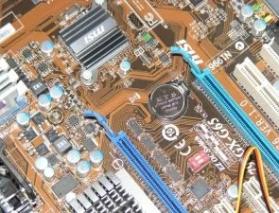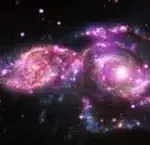 She lived about 150,000 years ago in southern Africa. Today she is known as Mitochondrial Eve. The “Eve” part is a little misleading since unlike the Biblical Eve, Mitochondrial Eve wasn’t the first or only woman alive at the time, and there were also plenty of men around. Still, Mitochondrial Eve was an actual person to whom every human today, male as well as female, can be traced back on his or her mother’s side—from mother to mother’s mother and so on.
She lived about 150,000 years ago in southern Africa. Today she is known as Mitochondrial Eve. The “Eve” part is a little misleading since unlike the Biblical Eve, Mitochondrial Eve wasn’t the first or only woman alive at the time, and there were also plenty of men around. Still, Mitochondrial Eve was an actual person to whom every human today, male as well as female, can be traced back on his or her mother’s side—from mother to mother’s mother and so on.
But interesting as such a linkage may be to scientists, how significant is Mitochondrial Eve for us? See what you think.
Mitochondria (my-de-KAHN-dree-ah) are particles inside of cells that produce energy for the cell. Originally independent cells themselves, mitochondria were engulfed by larger cells long ago, proved useful, and made themselves at home.
When they did so, mitochondria brought with them their own bits of DNA. These strands are not related to, and are much smaller than, the complex DNA in a cell’s nucleus that make up our genes. But like all DNA molecules, as mitochondrial DNA makes copies of itself, occasionally copying errors occur and the DNA changes slightly; it mutates. These changes can be tracked and dated so that as mitochondria DNA is handed down through generations of females, it forms a record of our ancestry separate from our genes.
If this is difficult to visualize, a rough analogy is the battery in a car. These 12-volt energy-units that power the starter motor come in different brands with serial numbers and other codes on them. Over the years, independently of changes in cars themselves, battery manufacturers make changes to car batteries. Now imagine that you had no other way of telling the age of a car that had, say, been crushed beyond recognition. One option would be to dig out what was left of the car battery to find its codes or numbers. The car battery would help date the car.
But if a particular version of mitochondrial DNA is passed down through women, how is it that males also carry it? Because this DNA comes in the cell that each human grows from, and that cell is our mother’s. Fathers contribute their sperm with some of the genetic DNA that creates the new person, but the cell itself that begins to divide and multiply is mom’s, complete with her formulation of mitochondrial DNA.
At the time that Mitochondrial Eve lived, of course, other mothers were passing along their own mitochondrial DNA to their own children, to their daughters’ children, etc. What happened to all those other versions? Why is it that today’s humans everywhere carry the same version, the same mutation, of mitochondrial DNA? Apparently all those other lines of mitochondrial DNA fizzled out. Some mothers bore only sons, with no daughters to carry on their cell line. Other women had no children at all. The single remaining “brand” of mitochondrial DNA has been traced back to an approximate place and time five thousand generations ago. It is as if over the years all brands of car batteries went out of production except the one that is now installed in all cars.
What are we to make of all this? Compared to the Biblical Eve and her list of firsts—first woman, first human to be curious, first mother—Mitochondrial Eve wasn’t a forerunner of any of our significant traits. It’s that other DNA, the genetic DNA from our biological mother and father, that decides the color of our eyes and our musical aptitude.
Still, as biologist Siddhartha Mukherjee writes in The Gene: An Intimate History: “I find the idea of such a founding mother endlessly mesmerizing.”
It is mesmerizing to know that a small identifier in each of us can be traced back to a single human mother long ago. In theory, any diverse group of living things has a common ancestor after whom its descendants branched off. But that common ancestor may be difficult to “relate” to. The ancestors of all primates (humans, monkeys, baboons, chimps, and others) lived about 60 million years ago and looked something like a squirrel with big eyes. I don’t feel the warmth.
On the other hand, it is captivating to think about a mother a long time ago from whom you, I and everyone else today are matrilineally descended and whom, if we saw her, we could recognize as one of us.












